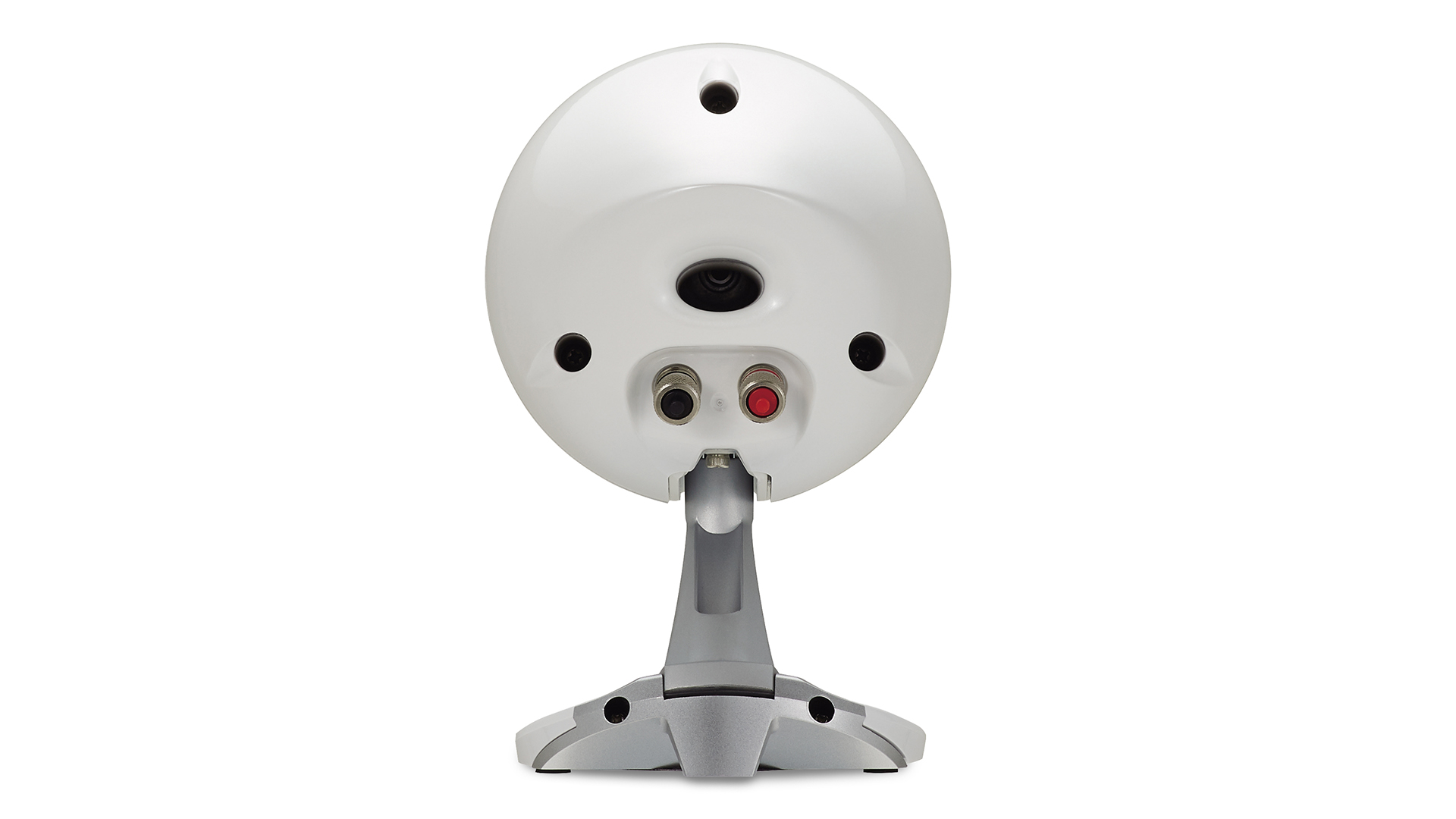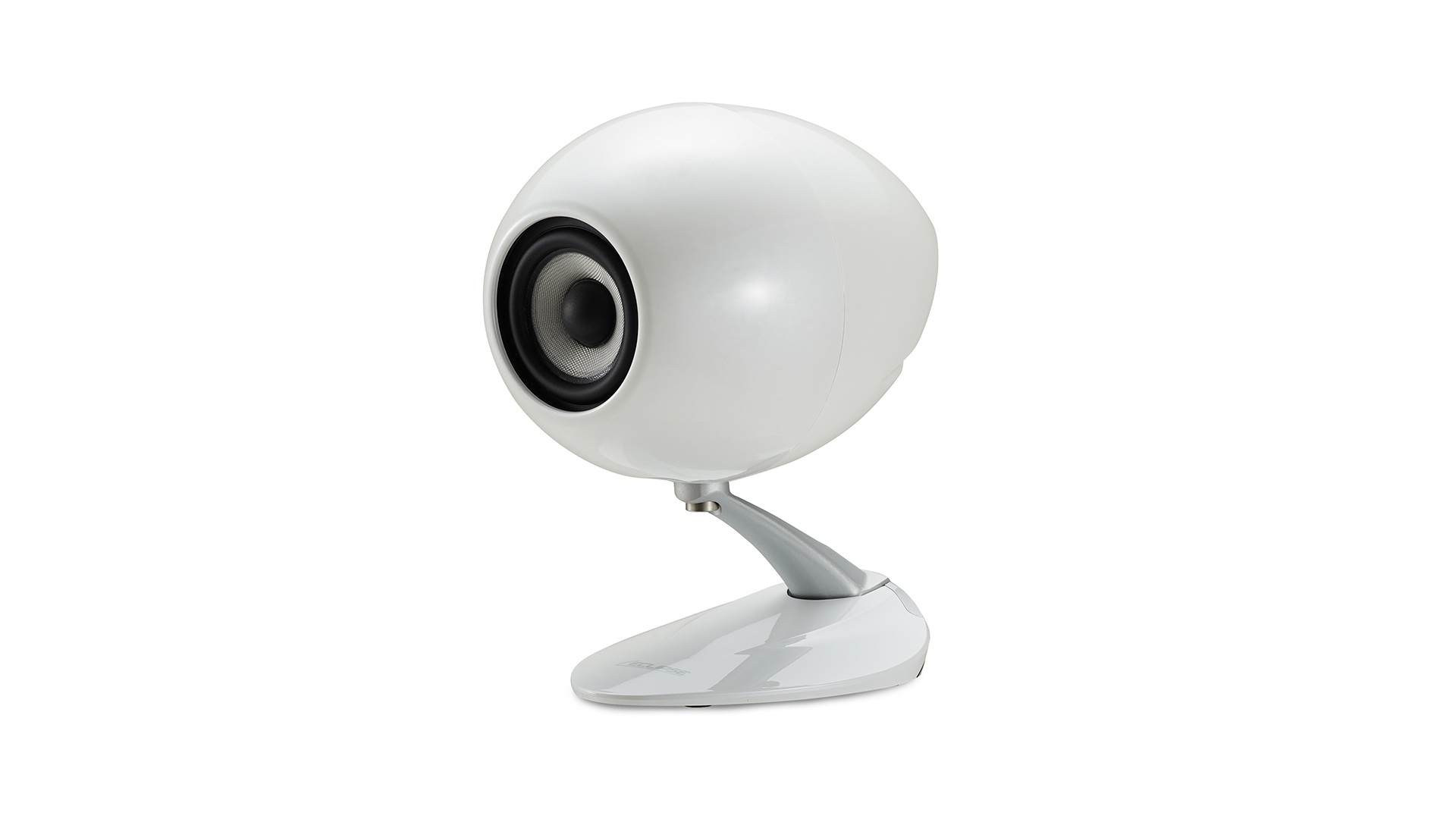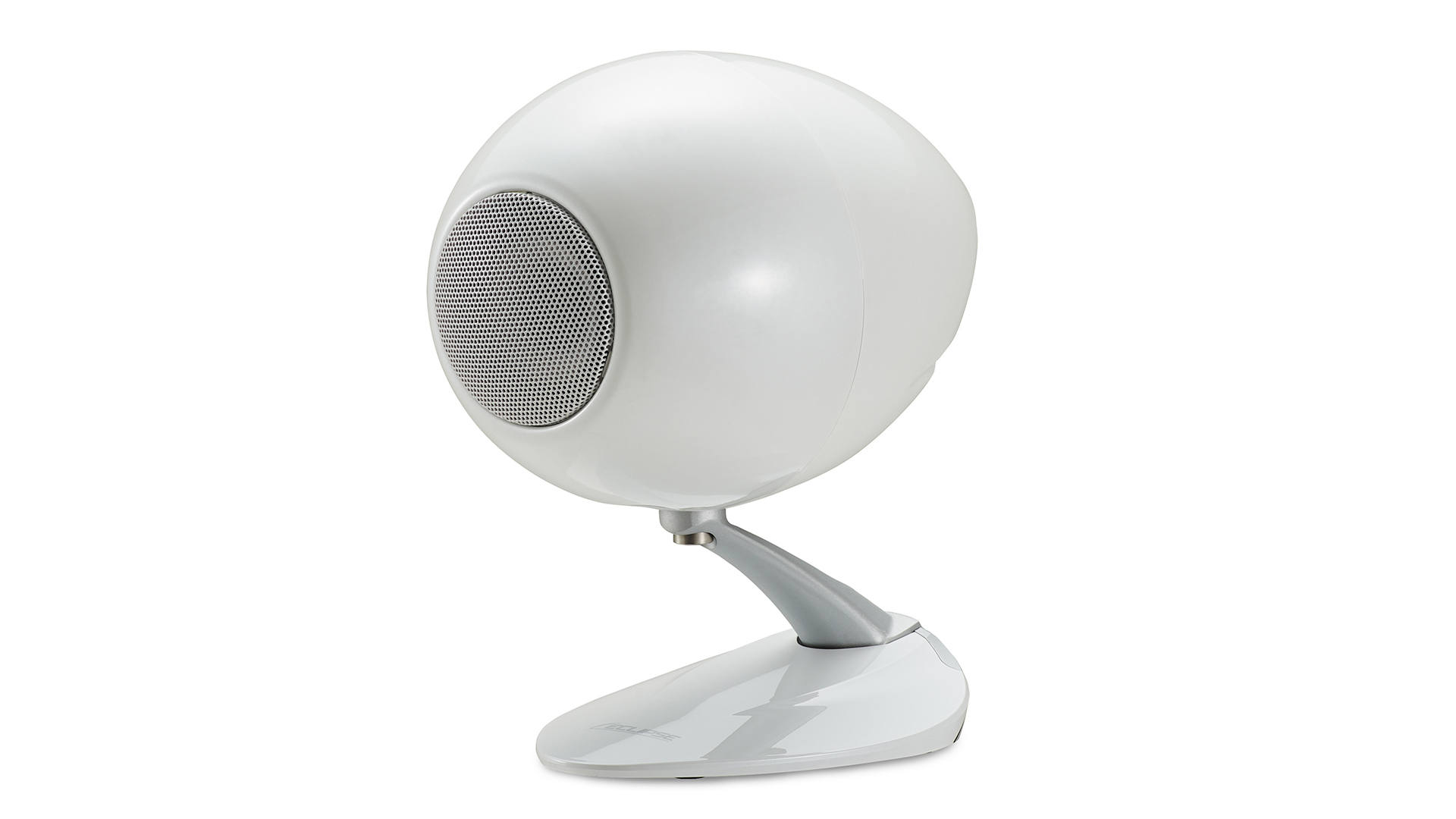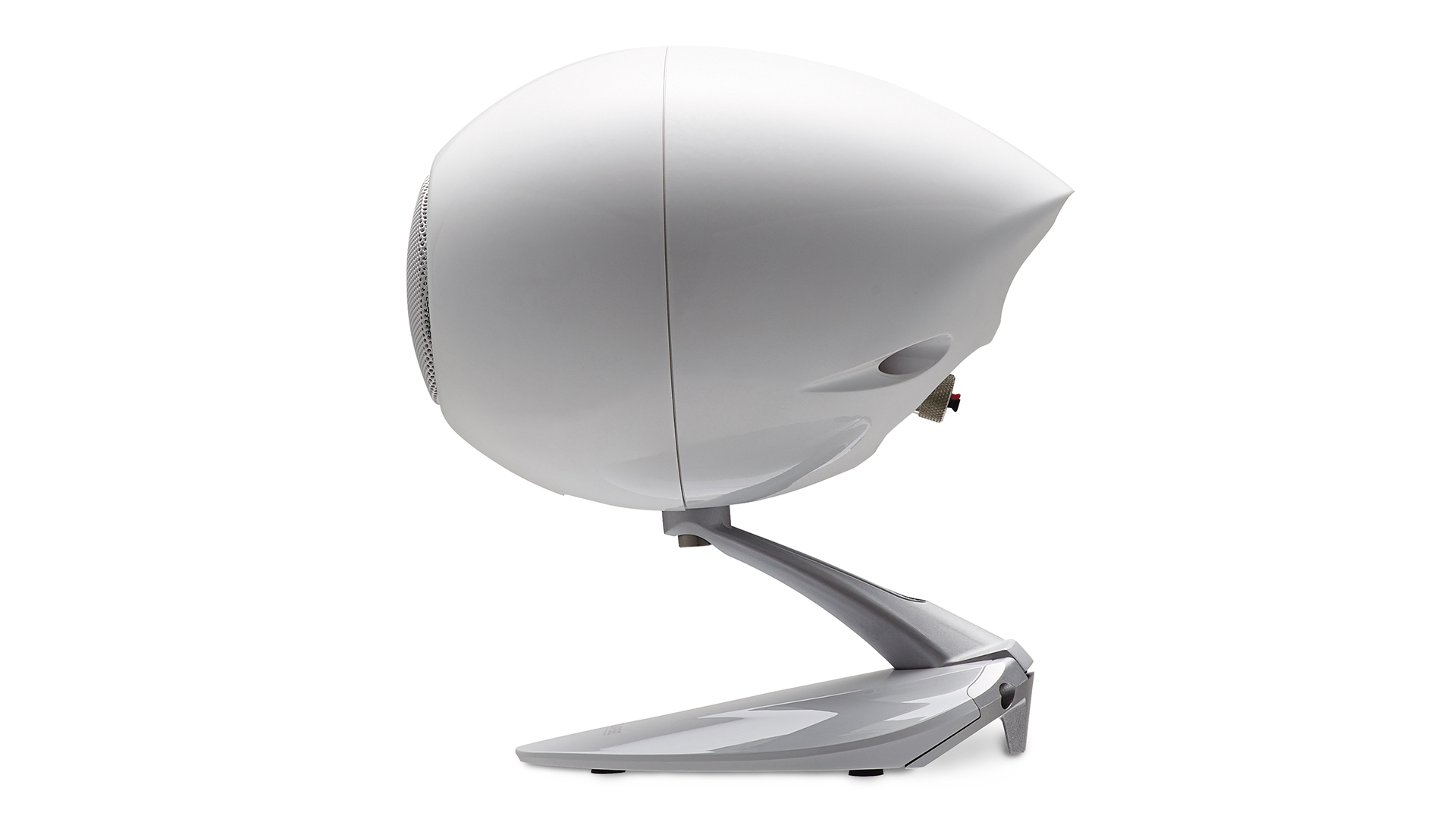What Hi-Fi? Verdict
Eclipse’s TD307 Mk3 have their limitations but are close to unbeatable in their areas of strength
Pros
- +
Detailed and insightful desktop speakers
- +
Clever engineering
- +
Excellent build and finish
Cons
- -
Lack bass depth and power
- -
Fussy about positioning
- -
Limited loudness capability
Why you can trust What Hi-Fi?
No one can accuse Eclipse of rushing things. This third generation of the baby TD307 is the first new model the company has produced in seven years. And yet, they look so familiar. That in itself is no surprise, as Eclipse is one of the most single-minded and consistent hi-fi companies we know.
You’ll see from the photos that the TD307 Mk3, like other Eclipse models, are not designs that follow convention. All the company's speakers from the very beginning – 2001’s TD512 started the ball rolling – have been designed to the same engineering template. The priority has always been to reproduce the time domain (that’s where the 'TD' in the name comes from) as accurately as possible, where almost every other rival on the market places more importance on getting the frequency balance right. The result is invariably a set of compromises and strengths that are unique in the market.
Build and compatibility

The use of a single drive unit is fundamental to achieving Eclipse’s aim. Doing things this way not only avoids multiple drivers that need to be integrated, but also the use of an electrical crossover network that innately introduces phase distortion, neuters detail resolution and restrains dynamic expression. The 65mm drive unit in this third generation of TD307 is all-new, with a fibreglass cone replacing the previous generation’s paper one. There are refinements to the motor system to give it more muscle, and greater volume inside that moulded egg-shaped enclosure. To give you an idea of size, these speakers stand just 210mm in height and are barely 135mm wide – they really are tiny.
As with all Eclipse’s speakers, that lone drive unit isn’t bolted to the cabinet at all. Instead, it’s attached to an internal high mass anchor that connects directly to the stand, feeding any vibrations out of the speaker structure. Touch that moulded cabinet while the speaker is playing and you’ll find it hard to feel anything in terms of mechanical vibrations. This really is a quiet cabinet, and that has benefits in transparency, resolution and stereo imaging.
This Mk3 version has a revised, more adjustable stand design that allows the speakers to be angled over a wide range of movement. It opens up the Mk3 to be used in all sorts of places, from the desktop (where they sound most at home) to ceilings and walls. There are even press images that show these speakers being used on either side of a TV, though there are reasons that we wouldn’t use them in such a way. More on that later.
The TD307 Mk3 are an unusual electrical load, being insensitive at a rated 80dB/W/m while having a low power handling of just 25 watts maximum. This means that they won’t go particularly loud and can’t be pushed hard. A modestly powered but high-quality amplifier such as the Rega Brio would be a good choice as a partner. Used in a desktop context, the restricted loudness capability matters less because the listener is sitting so close, but try to use the TD307 Mk3 in a conventional far-field manner and their limitations in terms of loudness, low-end extension and sonic authority are obvious.

Type One-way
Drive unit 65mm fibre glass cone
Port Rear-firing
Sensitiity 80dB/W/m
Impedance 8 ohms
Dimensions (hwd) 212 x 135 x 184mm
Using a single drive unit to cover the entire frequency range has limitations at both extremes. Make the drive unit small enough to be able to produce high frequencies and it’ll struggle to shift enough air to convince with bass, and vice versa. The TD307 Mk3 certainly have an advantage over their pricier siblings when it comes to the highs, being that they have the smallest drive unit. That, however, has repercussions in the bass, which sounds heavily restricted by conventional standards in terms of reach and power. These are also fussy about positioning, sounding most balanced when pointed directly at the listener. Deviate from this and the highs roll off quickly, leaving a dull and muffled presentation. This is why we don’t think they shine when used with a TV.
It all sounds so negative, doesn’t it? But thankfully that’s not the whole story. There are areas of the Eclipse’s performance that no conventional rival comes close to matching. With just a single drive unit making all the sound, these speakers deliver as cohesive a presentation as it’s possible to have. It’s nicely balanced – shortcomings in bass depth aside – gaining in terms of refinement and smoothness over the previous generation.
Sound

Rarely will you hear a more detailed sound anywhere near this level. The TD307 Mk3 have superb resolution and can pick out the tiniest of details, from the subtle acoustic clues that define the recording venue on Arvo Pärt’s Tabula Rasa right through to the intricate Quincy Jones production on his Back On The Block set. Voices may lack in terms of solidity, but these Eclipses excel when it comes to articulation and the ability to communicate the nuances that convey emotion. As we listen to Chaka Khan on The Places We Find Love from the Quincy Jones album it is hard to think of an alternative that does better when it comes to clarity and insight.
Take the time to position the speakers properly – nearfield and pointing directly at the listener – and you’ll get wonderful stereo imaging that’s as precise, focussed and layered as they come. In many ways these speakers remind us of a high-quality pair of headphones, such is their level of detail and responsiveness.
Large scale dynamics miss their mark due to the lack of sonic heft, but these Eclipses still uncover subtle changes in dynamic intensity with skill. When it comes to resolving low-level information, these speakers are absolutely exceptional.
Verdict

There’s much to be admired in Eclipse’s approach to speaker design. While there are obvious limitations by conventional standards – a lack of bass depth and dynamic punch are the most obvious in this case – there are equally areas of performance where the TD307 Mk3 stomp all over their conventional rivals. It comes down to how they are used and what your sonic priorities are. For the right person, these speakers will be hard to beat.
SCORES
- Sound 4
- Build 5
- Compatibility 3
MORE:
Read our review of the Bowers & Wilkins 607 S2
Also consider the Dali Oberon 1
Best computer speakers 2022: upgrade your desktop audio
Best speakers 2022: budget to premium stereo speakers
What Hi-Fi?, founded in 1976, is the world's leading independent guide to buying and owning hi-fi and home entertainment products. Our comprehensive tests help you buy the very best for your money, with our advice sections giving you step-by-step information on how to get even more from your music and movies. Everything is tested by our dedicated team of in-house reviewers in our custom-built test rooms in London, Reading and Bath. Our coveted five-star rating and Awards are recognised all over the world as the ultimate seal of approval, so you can buy with absolute confidence.
-
Bloke I owned the Mk2's briefly and felt they focused on mid and upper bass over any sort of HF extension. I was hoping for a giant set of headphones so it seemed odd to hear such a small speaker sound plummy. The balance on these sound more in keeping with their size/intended function.Reply

